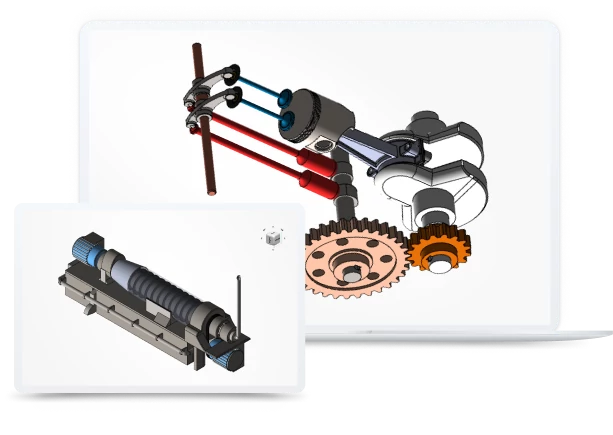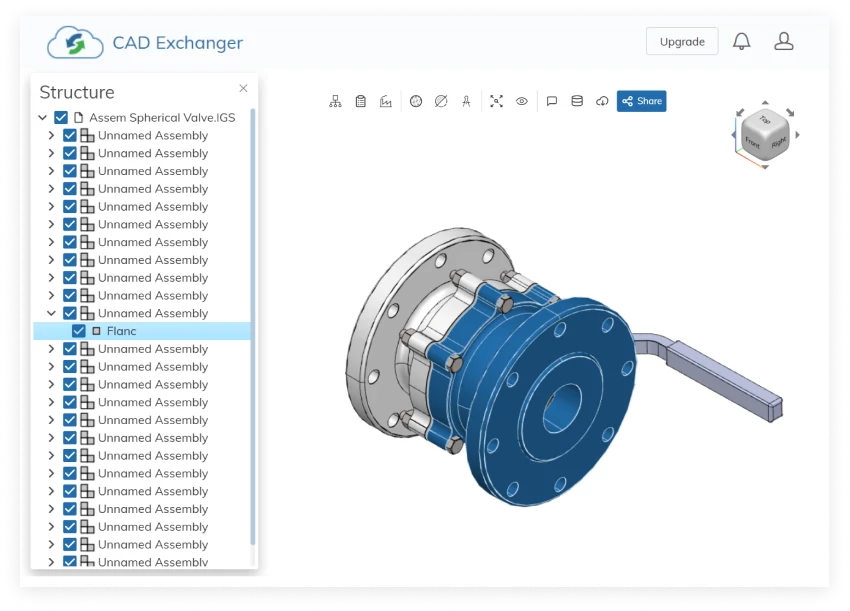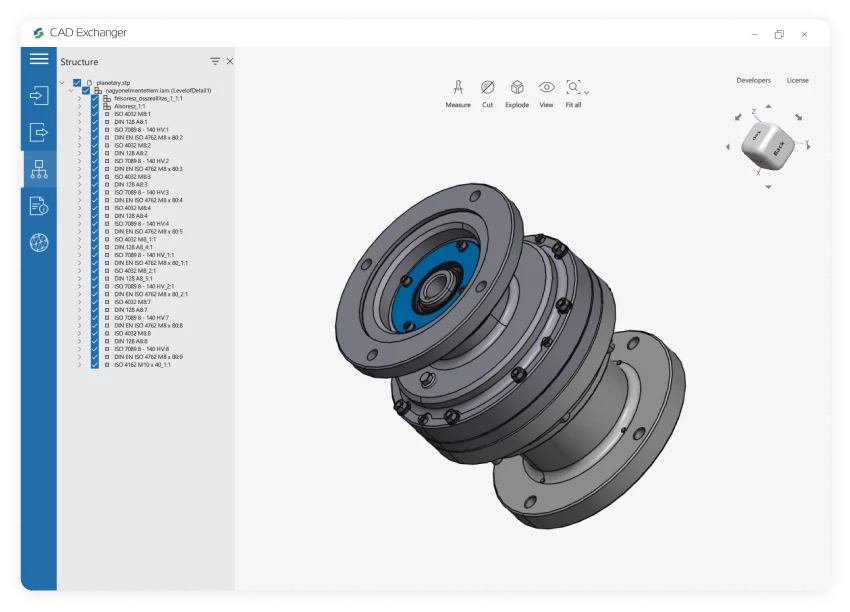

Exporting Siemens NX from Unity is not supported yet :(
Learn more
Unity
Unity is a game engine made by Unity Technologies. It supports more than 25 different platforms. This engine is used mostly to design three-dimensional, two-dimensional, virtual reality, and augmented reality games. It has been adopted not only by video gaming industry, but also by film, automotive, architecture, engineering and construction.
Unity enables users to develop games and experiences both in 2D and 3D, and offers a primary scripting API in C#, as well as drag and drop functionality. Within 2D games, Unity provides importation of sprites and a 2D world renderer. For 3D games, it allows specification of texture compression, mipmaps, and resolution settings for each platform it supports. Also, it provides support for bump mapping, reflection mapping, parallax mapping, screen space ambient occlusion, dynamic shadowing, render-to-texture and full-screen post-processing effects.
Siemens NX
Siemens NX is a proprietary format developed by Siemens Digital Industries Software and is optimized for seamless interoperability and efficient data exchange within the NX ecosystem. This format enables users to preserve the integrity and accuracy of their designs while facilitating collaboration and facilitating various engineering processes throughout the product lifecycle.
Support of Siemens NX files in CAD Exchanger
CAD Exchanger can import .prt files from v5 to 2212. Such support includes:
- B-Rep representations;
- polygonal representations (including multi-LODs);
- assembly structure (via external files);
- names;
- graphical PMI;
- colors.
Follow this link to check out all the CAD Exchanger products.
Pros of the format
Synchronous Technology
It is a capability integrated into the Siemens NX format that provides significant advantages for engineers and designers, including flexible editing, faster design iterations, easy collaboration, and enhanced design reuse.
Synchronous Technology allows for direct editing of geometry without being constrained by the traditional parametric modeling approach. Designers can easily modify and manipulate geometry without the need to track and update a complex history tree. Moreover, changes can be made directly on the model, providing instant feedback and allowing for quicker design optimization.
Integrated Product Lifecycle Management
One of the key advantages of the Siemens NX format is its seamless integration with Teamcenter PLM solutions. This integration allows for comprehensive product data management, including design, simulation, manufacturing, and collaboration, all within a unified environment. The tight integration of PLM capabilities ensures data consistency, reduces errors, and improves collaboration throughout the entire product lifecycle.
Cons of the format
Proprietary nature
Because the NX file format is specific to Siemens NX, developers may encounter challenges when trying to exchange data or collaborate with users or systems that utilize different file formats. This can require additional conversion or translation steps, which may introduce complexity and potential data loss or inconsistencies.
Furthermore, working with a proprietary file format restricts developers from leveraging open-source or third-party libraries and tools that are not designed to work directly with the NX format. This limits the flexibility and extensibility of developers' applications and may require more effort to implement certain functionalities.
Cost
The Siemens NX format refers to high-end CAD software, and it comes with a corresponding price tag. Compared to some other CAD tools, the licensing and maintenance costs for NX can be relatively higher. This may make it less accessible for individual users or small businesses with limited budgets. However, it's worth noting that the comprehensive features and robust capabilities of NX often justify the investment for larger organizations or industries where its unique strengths are crucial.
FAQ
What industries is the Siemens NX format commonly used in?
The Siemens NX format is widely used in industries such as automotive, aerospace, machinery, and many more. It caters to the needs of professionals involved in product design, manufacturing, and simulation.
Can the Siemens NX format be used for 2D drafting?
Yes, the Siemens NX format supports both 2D and 3D drafting and modeling. It offers a comprehensive set of tools for creating and editing 2D drawings, as well as designing complex 3D models.
Does CAD Exchanger have any limitations related to the Siemens NX format?
Yes. Siemens NX assemblies are represented with external files and it's possible for an assembly to contain components saved by different versions of NX. In case some of the components are saved by an unsupported version of NX, CAD Exchanger will not be able to load them and they will be omitted from the imported product structure.
How to open a .prt file?
To open this file, you will need a compatible software application, for example, CAD Exchanger Lab. Launch the software and navigate to the 'New file' option. Browse your computer's directories and locate the .prt file you want to open. Then select it and click "Open". Once the import process is complete, the .prt file should be loaded into the software, allowing you to view and interact with the 3D model and associated data.
History of Siemens NX format
The NX format has an interesting history that traces back to the early 1990s. It was initially developed by Unigraphics Solutions, a company founded in 1969 and later acquired by Siemens AG in 2007. Unigraphics, which later became known as Siemens Digital Industries, introduced the first version of the NX software suite in 1996.
Over the years, NX has evolved into a comprehensive and powerful CAD and CAM solution. With each new release, NX has consistently pushed the boundaries of innovation and set new industry standards. It has become a perfect choice for professionals in various industries, including automotive, aerospace, and industrial machinery.
The NX format itself has been constantly refined and enhanced to support advanced modeling techniques, simulation capabilities, and data management. It offers a range of features, such as parametric modeling, assembly design, digital simulation, and more, allowing engineers and designers to create and optimize complex products with efficiency and precision.
Today, the Siemens NX format is recognized as a leading CAD format, known for its robustness, flexibility, and compatibility with other industry-standard formats. It continues to evolve and adapt to the ever-changing needs of the engineering and design community, empowering users’ capabilities.

